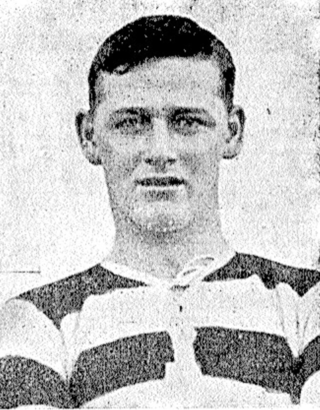
The New Zealand national rugby union team, commonly known as the All Blacks, represents New Zealand in men's international rugby union, which is considered the country's national sport. Famed for their international success, the All Blacks have often been regarded as one of the most successful sports teams in history.

The Bledisloe Cup is an annual rugby union competition between the national teams of Australia's Wallabies and New Zealand's All Blacks that has been contested since the 1930s. The frequency that the competition is held has varied, as has the number of matches played in each tournament, but it currently consists of an annual three-match series, reduced to a two-match series in World Cup years, with two of the matches counting towards The Rugby Championship. New Zealand have had the most success, winning the trophy in 2023 for the 51st time and 21st in succession, while Australia have won the trophy 12 times.

New Zealand Rugby (NZR) is the governing body of rugby union in New Zealand. It was founded in 1892 as the New Zealand Rugby Football Union (NZRFU), 12 years after the first provincial unions in New Zealand. In 1949 it became an affiliate to the International Rugby Football Board, now known as World Rugby, the governing body of rugby union for the world. It dropped the word "Football" from its name in 2006. The brand name New Zealand Rugby was adopted in 2013. Officially, it is an incorporated society with the name New Zealand Rugby Union Incorporated.
John Edward Thornett, MBE was an Australian rugby union player, who played 37 Tests for Australia between 1955 and 1967 and made an additional 77 representative match appearances. He captained Australia in 16 Test matches and on an additional 47 tour matches on the eight international rugby tours he made with Wallaby squads.
Richard Norman Thornett was one of five Australians to have represented their country in three sports. He was an Olympic water polo player before becoming a rugby league and rugby union player – a dual code international representative.

The first clash in Rugby Union between Australia and New Zealand took place in a test match on 15 August 1903 in Sydney, New South Wales. On that occasion, New Zealand won 22–3.

John Hoani Macdonald was a New Zealand sportsman. He competed in rowing at the 1930 Empire Games, winning gold in the coxed fours, and at the 1932 Summer Olympics, becoming one of the first two Māori Olympians. He played rugby union for New Zealand Māori from 1926 to 1935 and professional rugby league in England from 1935 to 1939. During World War II he served in the Royal New Zealand Air Force and played rugby union for New Zealand Services and England Services sides. He also played tennis for the Royal New Zealand Air Force team in armed forces matches at Wimbledon. He was inducted into the Māori Sports Hall of Fame in 2008.

The 1907–1908 New Zealand rugby tour of Australia and Great Britain was made by a group of New Zealand rugby footballers who played matches in Australia, Ceylon, England and Wales between 1907 and 1908. Most of the matches were played under the rules of the Northern Union, a sport that is today known as rugby league. As such, the team were the immediate predecessors of the New Zealand national rugby league team. The tour had a large role in establishing rugby league in both Australia and New Zealand, and also gave birth to international rugby league. The tour party has come to be known as the professional All Blacks or All Golds, although at the time they were commonly referred to as the All Blacks—a named popularised by the New Zealand rugby union team that toured the Northern Hemisphere in 1905.

John Richard "Dick" Wynyard was a New Zealand rugby footballer who was part of the professional 1907-1908 New Zealand rugby tour of Great Britain. Richard was the brother of William Wynyard. He had 2 sisters, Kathleen Amelia Wynyard (1887-1965), and Audrey Gertrude Wynyard (1892-1920), and 2 brothers, Leslie Henry (Hec) Wynyard (1889-1985), and Sydney Montague Wynyard (1894-1953)
The 1975 Scotland rugby union tour of New Zealand was a series of seven matches played by the Scotland national rugby union team in New Zealand in May and June 1975. The Scotland team won four of their matches and lost the other three. They lost the only international match against the New Zealand national rugby union team in a game played in a downpour on a saturated pitch.
Alwin John "Dougie" McGregor (1889–1963) was a dual-code rugby footballer who represented New Zealand in both rugby union and rugby league.

Richard George Myers is a former New Zealand rugby union player. A loose forward, Myers played for Leamington RFC in Cambridge and is the only All Black to have played for the club. He represented Manawatu and Waikato at a provincial level, and was a member of the New Zealand national side, the All Blacks, in 1977 and 1978. He played five matches for the All Blacks including one international. On his test debut for New Zealand he played at Number 8 against the Wallabies where his opposite number Greg Cornelsen scored 4 tries in a 30–16 victory for Australia.
John Edwin Black is a former New Zealand rugby union player. A hooker, Black represented Canterbury at a provincial level, and was a member of the New Zealand national side, the All Blacks, from 1976 to 1980. He played 26 matches for the All Blacks including three internationals.

Laurence Stokes Haig was a New Zealand rugby union player. He was born in Scotland but emigrated to New Zealand with his family when he was two years old. A first five-eighth, Haig represented Otago at a provincial level, and was a member of the New Zealand national side, the All Blacks, between 1950 and 1954. He played 29 matches for the All Blacks including nine internationals, and captained the side on six occasions.

Malcolm John Dick is a former New Zealand rugby union player and administrator. A wing three-quarter, Dick represented Auckland at a provincial level, and was a member of the New Zealand national side, the All Blacks, from 1963 to 1970. He played 55 matches for the All Blacks including 15 internationals.
James Douglas Mackay was a New Zealand rugby union player. A wing three-quarter, Mackay represented Wellington at a provincial level, and was a member of the New Zealand national side, the All Blacks, in 1928. He played two matches for the All Blacks, scoring four tries, but did not appear in any internationals.

Richard William Roberts was a New Zealand rugby union player. A centre three-quarter, Roberts represented Taranaki at a provincial level either side of World War I, and was a member of the New Zealand national side, the All Blacks, for their 1913 tour of North America and 1914 tour of Australia, captaining the side on the latter tour. In all, he played 23 matches—nine as captain—for the All Blacks, including five internationals, and scored 102 points.
Edward Richard George Steere was a New Zealand rugby union player. A lock, Steere represented Hawke's Bay at a provincial level, and was a member of the New Zealand national side, the All Blacks, between 1928 and 1932. He played 21 matches for the All Blacks including six internationals, and captained the team in two matches on their 1932 tour of Australia. He scored one try for New Zealand, against Newcastle at Newcastle on the 1932 tour.

George Thomas Augustus Adkins was a New Zealand rugby union player. A prop, Adkins represented South Canterbury at a provincial level, and was a member of the New Zealand national side, the All Blacks, from 1935 to 1936. He never played a full test but was part of the 1935–36 New Zealand rugby union tour of Britain, Ireland and Canada playing against local sides.












